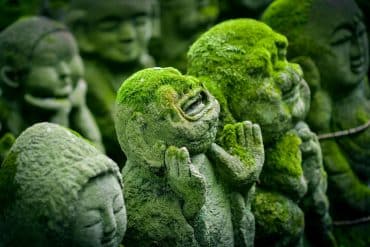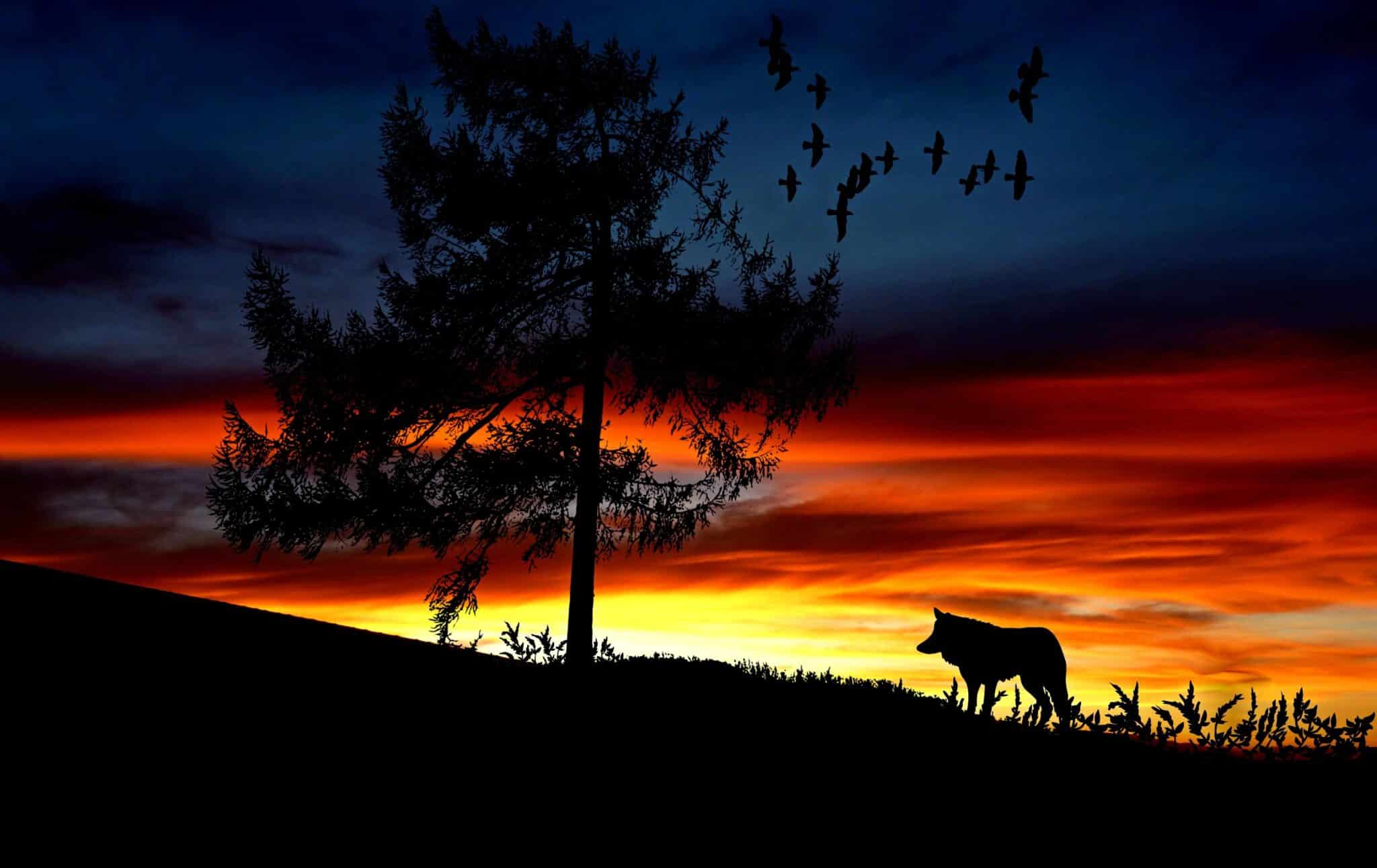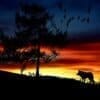Out of Place: A Mexican Lobo & Puerto Rican Human Explore a New Landscape
Author’s Memo
Puerto Rican migration has increased in recent years, due to a complex combination of colonialism, disaster capitalism and environmental degradation. For Puerto Ricans who move to the States, like myself, it’s common to feel an overwhelming sense of nostalgia. At the same time we try to adapt, be happy, raise families and the like.
Part of that happiness, I’ve always felt, is to be found in the immediate landscape, its flora, its fauna. Especially the latter. Maybe the ocean is far away, I tell myself, but look, a deer!
The animals that are so common for my local, northern friends seem new and exotic to me. I observe theses creatures with a gaze made of equal parts grown-up anthropologist and the child I used to be. As a young child, I was fascinated by strangers and their activities, and my mortified abuela scolded me often for pointing and staring. If she were alive,I wonder what she’d think, knowing I ended up making both a career (and now, some weird form of self-help) out of that habit. At any rate, the more time I spend watching the local wildlife in each of my new places, the better I feel, the more I can adapt, the more at home I am.
It never occurred to me to consider that, just like Puerto Rican immigrants, just like myself, some of these creatures decide to or are pushed to move, sometimes great distances. Just like humans, they might land in a complex political landscape where some might welcome them, but some might not. That many might celebrate their being different and special, while others might resent their being “other” and “out of place”.
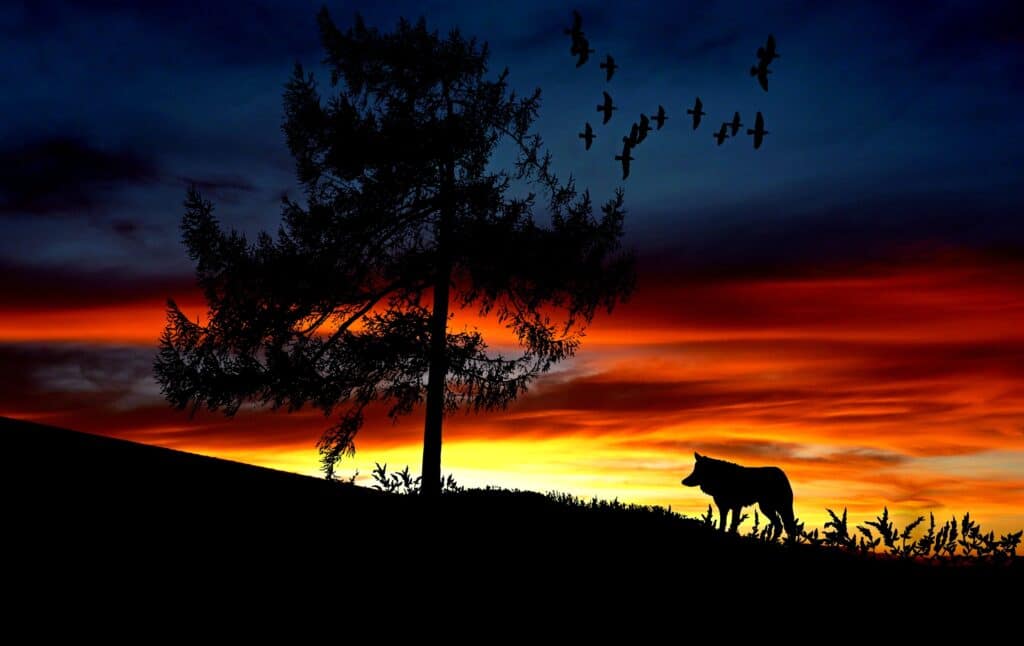
Out of Place: A Mexican Lobo & Puerto Rican Human Explore a New Landscape
Back home in Puerto Rico, we played the children’s game of tag. A particular tree was often designated as a home base of sorts. To touch it, shouting “¡toca palo!,” was a win and felt like a declaration of having arrived. It was a sense of safety, of invulnerability.
Puerto Rico is a Caribbean archipelago, southeast of Florida and east of the Dominican Republic. It has been a U.S. colony since 1898, and is also, in the deepest way, my home. My husband and I were born and raised there. Our ancestors lived and died there. And our children were born there. It is home, but I do not live there.
Colonized peoples often migrate, sometimes precisely to the empires that own(ed) their countries and define their possibilities. There are almost 6 million Puerto Ricans living in the states (while only 3 million reside in Puerto Rico). We joined their ranks in 2010. From here, I watch my islands; I help and hope as best as I can. My beautiful people live under and resist the constant attack of debt and disaster, corruption and colonialism.
At the same time, I know I need to be aware of the dangers of my nostalgia. An emotion full of life and color, its beauty is a Trojan horse for the dangers within: paralysis, despair, obsession. Time and again I learn and relearn the importance of resisting the temptation to ignore my surroundings. I learn and relearn to ground myself in and pay attention to the space I find myself in now, here. I’ve had ample opportunity to practice paying attention to my present surroundings; we have lived in four different U.S. cities over the past dozen years. To my dismay, however, I do not possess an adventurous spirit. This means that getting used to and learning to appreciate each new habitat was (and is) a slow, parsimonious affair. It’s a process that always begins outside, in the yard.
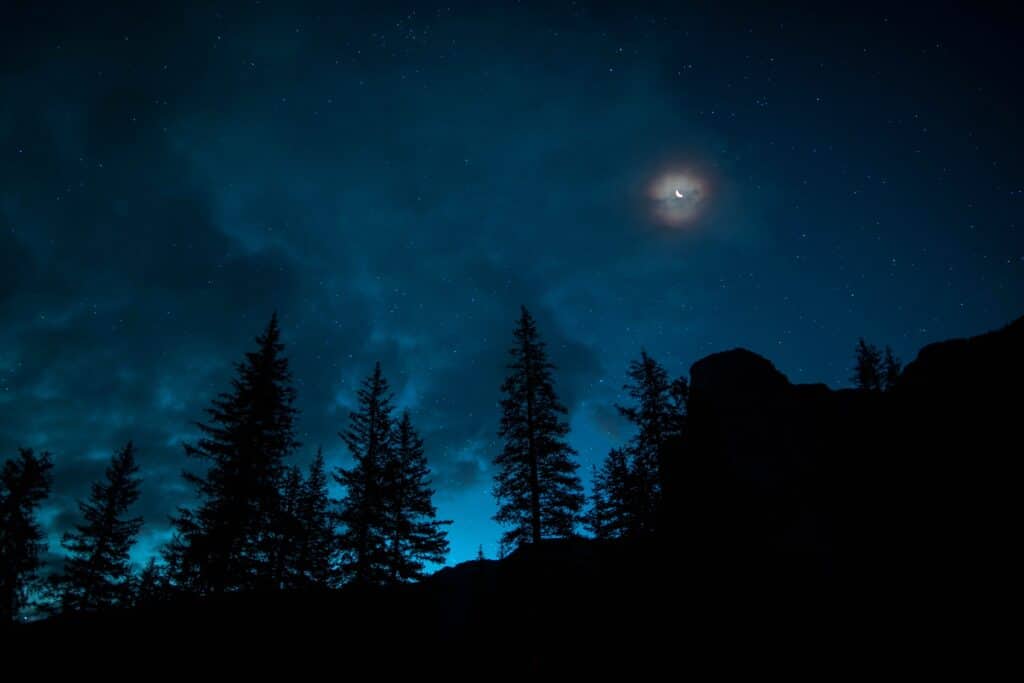
The Yard
By “yard,” I’m referring to the nearby landscape, not necessarily to a patch of my own property. In fact, no “yard” here in the United States has belonged to us before the one from which I now write in Northern Arizona. Even in this one, my notion of “yard” extends beyond what, legally-speaking, belongs to us. The backyard of this house borders a forest of enormous Ponderosa pines. And not only do the pines, with their sturdy beauty, fill the landscape I explore timidly, inch by inch; they are helping me habituate. They’ve begun to whisper you are at home, relax, you are at home.
I think their talent for inspiring calm has more to do with their color than with their size. Unlike, let’s say, the magnolias that lined our street in the Bronx, the cherry trees shedding their fragile beauty every Spring in Washington D.C., the ginkgos dotting our southern California neighborhood, or the maples awkwardly housed in their little cages in Manhattan, these pines here in northern Arizona are not only immense, but they never lose their leaves: they are evergreen, always green, no matter the season. I’m a transplant from a land where there’s no winter, so the green helps.
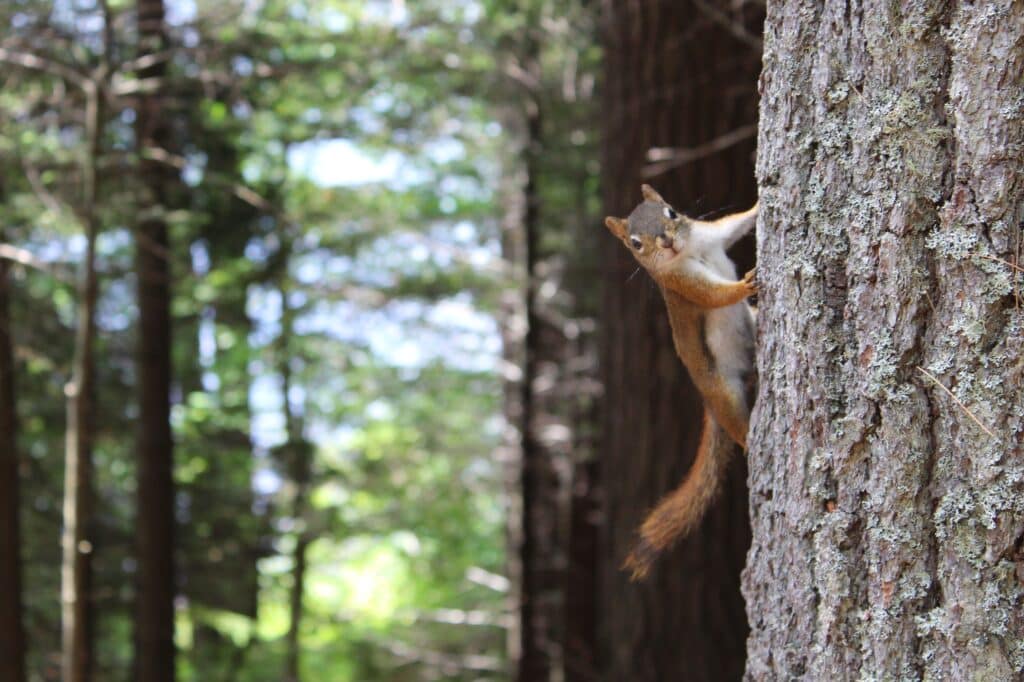
And Not Just the Flora, but the Fauna
The trees in each of those homes of ours here in the U.S. have been an important part of the landscapes that, little by little, I explore and, however minimally, come to know. And not just the flora, but the fauna. Especially the fauna, actually. Some small animals, such as squirrels, seem to be omnipresent, approaching us, without fear, on both coasts. They vary somewhat in shape, depending on their location: the squirrels in northern Arizona, for example, have longer, pointier ears than the squirrels in New York and Virginia. But they’re all the same gray color, and they seem to be everywhere all the time. They remind me of the grackles in Puerto Rico, our changos: hopping about so constantly that one tends to forget about them after a while, despite how ever-present they are.
Now, this “hop about” doesn’t quite satisfy me, it’s not a particularly precise verb: squirrels move in such a peculiar fashion that they’ve earned their own verb in English, “squirreling,” a verbal form of the noun that doesn’t exist in Spanish and that serves to describe a quick, nervous movement but also the tendency to stash small objects (nuts, pine cones, the occasional object or loose button escaped from a human pocket) in hiding places to which they later return to rummage about, eat, rest and take refuge from the cold.
They are comically opportunistic, squirrels: In New York, for example, they regularly displaced the birds happily bathing in concrete fountains (or marble ones, in fancy yards) that are called, literally, “bird baths” here in the United States, where they frequently adorn east coast yards. The little rascals are more than capable of stealing if you give them access to interesting items, sufficiently small and lightweight for them to carry off in their greedy little paws.
Each state brought with it some special little animal, some fauna “discovery,” and I’d sometimes snap a quick photo and text it to the group chat I have going on with my girlfriends from Puerto Rico. In Virginia it was a racoon (a delightful creature, masked like Zorro, with a furry gray tail decorated with white rings) that visited our garbage bin in the middle of the night and with whom I locked eyes when I darted outside to smoke a cigarette (no, dear reader, I no longer smoke, I managed to break that habit a long time ago). And there it was, my amigo, the racoon, el mapache, who could very well have been female, but forever stayed “amigo” in my memory. He stared at me for a few seconds and, seeing that I had no intention of approaching him, went about his business: rooting through the garbage bin.
A month or two later, I found an opossum (the first time I saw a zarigüeya in real life!) inside the same garbage bin, though I couldn’t observe it for long since I clapped the lid down in fright, leaving it ajar to provide the little creature an escape route, and went back inside the house, deciding I’d had enough adventure for a Wednesday night, and besides, my usual early-morning journey to DC by Metro and foot to my white cubicle on H Street awaited me the following day.
There in Virginia, and later in New York, I grew accustomed to certain birds that were extremely commonplace for my neighbors but were, for me, almost magical. The robin, petirrojo, for example, who heralds the arrival of spring. The blue jay, azulejo, with its intense, impossible color, who follows a few weeks later. I don’t know if this happens to you, but for me, the color blue in an animal always catches me by surprise, in a good way: blue is magic, a sort of diminutive, preposterous, lovely magic.
I neglected to mention the ever-present finches ( formally pinzones in Spanish, but everybody back home calls them “finches” as well) who behave as though any old bush, even the most scraggly, were a grand condominium or even a bustling metropolis. Like the crabs, boobies and other creatures inhabiting the mangroves of my native Puerto Rico, that place that is both land and sea, these continental finches remind me daily that whole universes and histories can issue forth from a common hedge.
As I write this, my mood has turned a bit blue, the color of the New York blue jay – and maybe also, ay, the blue of Anubis – but I’m getting ahead of myself, distracted by that magical color bursting onto the page. We were talking about the birds and little animals that marked each stay, each home, each modest yard adventure, in this strange continent I now inhabit, far from my island, and before writing about Anubis I still need to describe (discover?) a few characters from my previous stops.
In Virginia, the most significant encounter was with the garbage-loving racoon. In California, it was probably the suburban coyote I watched with particular fascination until I learned from a neighbor that it had carried off their small dog. After that, I watched it with more fear than fascination, with that sense of unease we feel knowing (or rather learning and relearning, over and over again) that the animal world’s incursion on our spaces is the inevitable consequence of the expansion of the human world and our meddling with the habitats of the rest of this planet which, thanks to us, has thoroughly ceased to be “natural.”
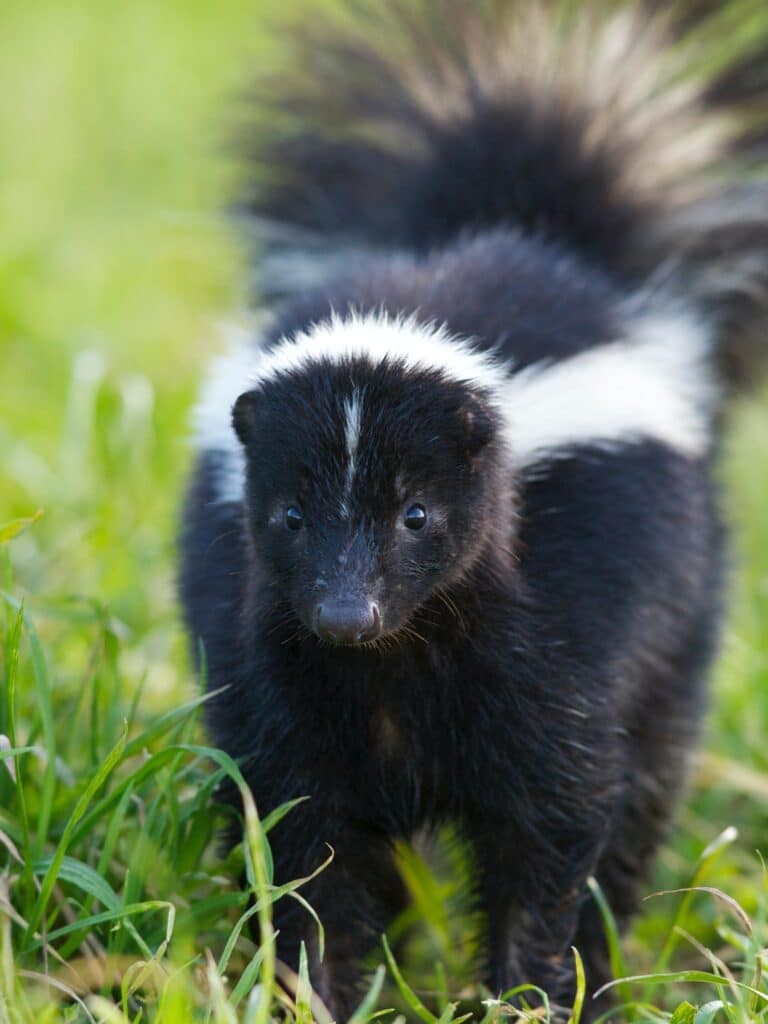
Flower
In New York, after meeting the enormous rats in the subways (they are truly enormous, believe New Yorkers when they tell you they’re the size of cats), and getting past my obsession with the robins and blue jays fighting with the squirrels over the bird bath, I met Flower.
Flower, of course, was what I called the Bronx skunk (zorrillo) I became acquainted with. If naming a skunk “Flower” doesn’t seem obvious to you, either you’re much younger, or older than I, because “Flower” is a character from the movie “Bambi,” a film that supplied us island-raised gen-xers with images to pin down nouns such as “skunk,” which existed in our colonial imagination but not in our Caribbean material landscape.
It’s odd: with no evidence and purely on a whim, I identified the skunk as female and named her “Flower.” But it doesn’t matter. What matters is that she was an adorable, nocturnal creature, and my encounters with her were at sufficiently close range for me to observe her, but at enough of a remove to protect me from what everyone, northerners or not, already know: if a skunk feels threatened, it sprays a foul-smelling substance that, in addition to tormenting anyone with the misfortune of being close by, leaves behind an unmistakable scent that can spread over a kilometer or more.
Flower was smaller than I’d expected a skunk to be. The truth is that, the deeper I dig, the more I discover just how much my zoological imagination is linked to the cartoons and movies that arrived, always belatedly, from the empire. My neighborhood “Flower” didn’t look like Bambi’s friend. She was smaller, with short little legs, and had a kind of white hat crowning the head of her almost completely black body. I saw her, on the first of four or five occasions, while I was walking my dog at night, and we were about twenty feet away from one another (and from my house) when we froze. We stood there for a while (looking at one another, it seemed to me), until, at almost the same moment, we each went our separate ways. She in a straight line, my dog and I towards the house.
The next day, reading about skunks on the Internet, I learned that Flower was, like nearly her entire species, practically blind. This is why they seem to spray so indiscriminately, because any encroachment can be a threat. I found it endearing that she was blind. My tenderness diminished a touch when, toward the end of winter, we discovered that she had moved, with her babies, into our garage. But there was no need to evict her: she left shortly thereafter, when the weather warmed a little, leaving nothing behind save a faint whiff of that unmistakable skunk scent.
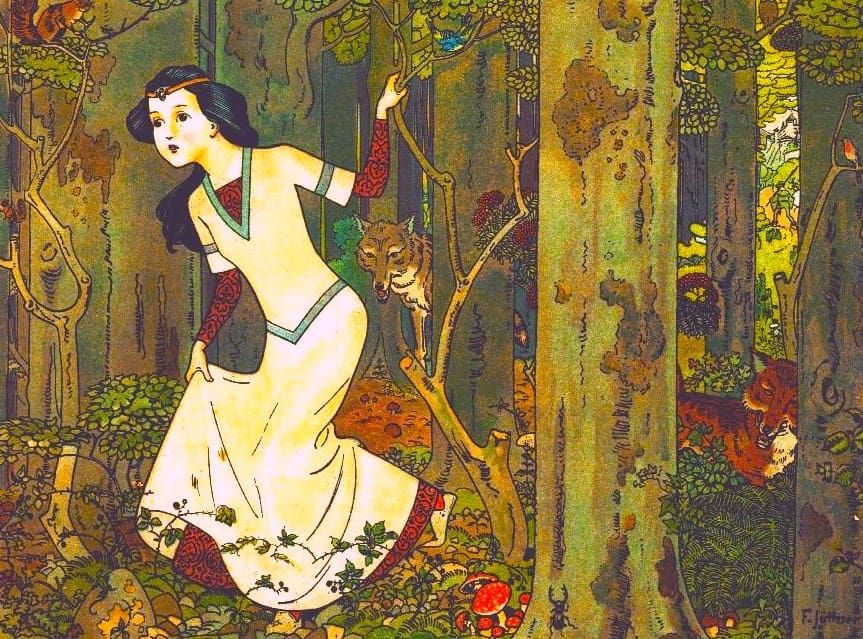
A Veritable Snow White
This business of being the Puerto Rican newcomer getting to know northern flora and fauna is interesting. Me, speaking in animated amazement about a common bird or mammal, and my neighbors amazed at my amazement, because for them, my reaction is, I imagine, similar to what a gringo might feel in Puerto Rico gazing at a common grackle, chango. What a beautiful bird! Such shiny plumage!, they’d say, as the extremely common “beautiful bird” swoops in to steal one of their French fries before flying off again.
Here in Arizona, our neighbors are a lovely, friendly couple, both retired. One of them texted me, as a joke, the classic image of Snow White on an ordinary morning in a typical Disney forest, surrounded by friendly animals. And it’s true, it’s a lot like my mornings. I walk outside on any random Tuesday and encounter noise and movement everywhere. A woodpecker looks at me, unperturbed, pauses for a moment, then goes back to pecking the wall of my house.
So yes, when it comes to seeing wildlife here, at 7,000 feet, where it’s always 20 or 30 degrees colder than, say, Phoenix, I’m a veritable Snow White (thirty-five years older, slightly scared of snow, new to the place, and more brown than white, but you know what I mean). Almost every day we are visited by deer, sometimes two, sometimes ten and, on one memorable occasion, more than twenty. There are no blue jays here, but there are Steller’s jays that look a lot like them, though they’re plumper and louder; there are I don’t know how many species of finches; countless squirrels and chipmunks; a lot of crows and some hawks; and groundhogs–plump, furry and watchful, as delightful as their name in Spanish, “marmota.”
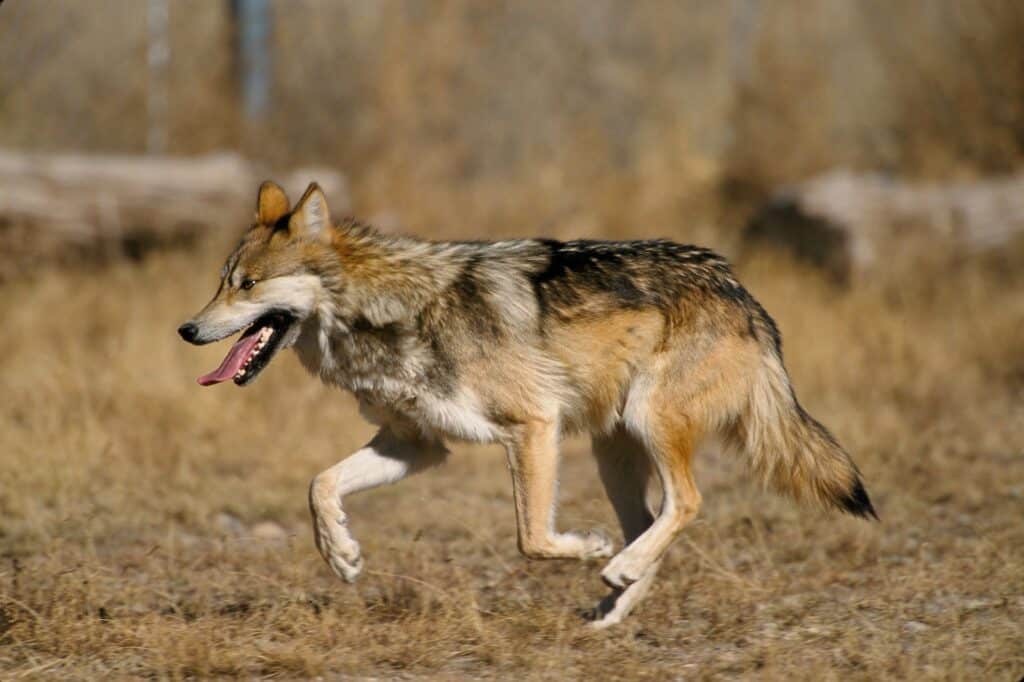
Anubis
Anubis was something else entirely.
I think it was a Tuesday morning, July or August of 2021. The neighbor told me to be on the lookout. He’d seen a family of foxes hanging out at the far end of our yard. I was excited by the prospect of seeing foxes, even from afar.
The following day, I went out into the backyard with my dog and I saw a beautiful animal. It was perched on a rock about twenty feet away, but on our side of the fence. He was bigger than I had expected, based on my points of reference for “fox”: Disney and The Little Prince. He observed us calmly. I looked at him and he looked back. His fur was a combination of white, gray, red, and something blue, a sort of blue-gray phantasmagoria floating above him, or perhaps emanating from him. He had a large face. In fact, his head was adorably huge. He was so calm that it didn’t even occur to me to be afraid of him. I stayed put but snapped a photo with my cell phone. After maybe ten or fifteen minutes, he left.
I went back inside the house. I texted the photo (like so many other animals from the north or from the islands) to my girlfriends. Immediately, one of them responded:
It’s a wolf.
No, said I, a woman of the world, it’s a fox. My neighbor told me. He’s from here and he knows these things.
Well, it looks like a wolf to me, my friend said, and I imagined her shrugging her shoulders.
Nah, fox, I replied, and we left it at that.
But my friend was right. Two weeks later, we saw him in the newspaper. Isn’t that your fox?, asked my husband.
We compared the photos: it was the exact same animal. My “fox” was not only a wolf, but a Mexican Gray Wolf, also known as “lobo” (canis lupus baileyi). It was named M2520 but known widely as “Anubis.” Apparently, he had crossed one of those arbitrary borders that has very little to do with ecology and a great deal to do with human caprice, and had moved into the woods around Flagstaff, sheltered by the same pine trees that had so generously received me. Toca palo. His was, of course, an endangered species, which is why he appeared so often in the news. To capture or kill him would result in a fine and a jail sentence.
Of course, I sent the photos and the news story to my friends: Well, you were right, M. It was a wolf, not a fox. His name is Anubis.
According to an expert biologist quoted in the newspaper, these wolves do not understand borders: they understand habitat. They cross Interstate 44 because it makes sense to do so. Because the opposite side is habitable. And because the act of crossing itself, of adventuring, of seeking out places to settle, is in their nature. Anubis had done it the year before, in October. For his own safety, a team of experts had returned him by car to Mexico. But he came back the following summer, and this time, the team from the Arizona Department of Fish and Wildlife decided that, instead of returning him to “his place,” they would announce his presence to the public and put a visible, bright pink, electronic collar on him so as to be able to closely monitor his movements.
Shortly after visiting my yard, Anubis began appearing regularly in the newspapers. He never demonstrated any aggressive behavior towards humans, pets or cattle. He was the rarest and smallest species of wolf in North America. I’d say he was about the size of a German Shepherd, maybe. Many of us celebrated his presence. We thought he would find a mate. We thought that our city and our forest, Coconino, would be the place where Anubis would find happiness and where a species on the brink of extinction would begin to recover.
I traveled to Puerto Rico, and there I spent the Christmas holiday with entirely different flora and fauna. I took pictures of hens, goats, iguanas, crabs, warblers, orioles, pelicans, mangroves…. Then I returned to Arizona on January 1st.
Two days later, I found out that someone had killed Anubis. Who? A hunter, maybe. When? January 2nd. Why?
Why. The truth is, I have no idea. I count curiosity and a certain capacity for empathy as two of my few useful skills. And yet, I cannot understand the person with a gun who decided to shoot Anubis.
Anubis was killed (illegally) while walking through a forest. Perhaps he paused to look curiously into the eyes of his killer. His sin was not attacking humans or stealing chickens. His sin, it would appear, was simply being a Mexican Gray Wolf, and being in Arizona. Being here with his pink collar, with his fur somehow emanating that magical blue, and with that calling, impulse or need for movement and travel that I understand so well, which led him to cross a line that for him could not exist, one of those imaginary lines we call a “border” and are products of an imperial imagination, a “border” that, without actually existing, kills.
Featured photo of wolf at sunset by Pixabay for Pexels;
Photo of trees at night by Roberto Nickson for Pexels.jpg;
Photo of squirrel by Maddie Franz for Pexels; Photo of a skunk by Bryan Padron for Unsplash;
Illustration by Franz Jüttner of Schneewittchen for Wikipedia.jpg;
Photo of Mexican Wolf by WikiImages from Pixabay I The AutoEthnographer
@RimaBrusi is a Puerto Rican writer, anthropologist and advocate. She’s a professor of anthropology at Northern Arizona University.



